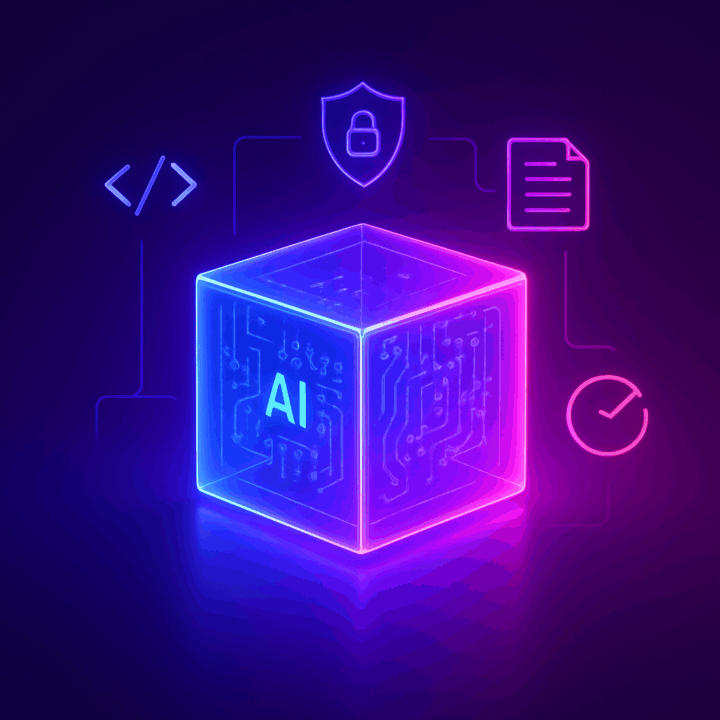Key Takeaways: What Is AI Governance?
- AI governance is the framework and process to manage how AI systems are built, used, and monitored in an organization.
- It ensures security, compliance, ethical use, and performance across internal and third-party AI systems.
- Core components include:
- Discovery: Surface all AI systems in use (even shadow AI).
- Oversight: Document ownership, usage, and risk posture.
- Policy Enforcement: Continuously test and remediate models to ensure alignment with standards.
- Governance is critical to comply with regulations like the EU AI Act, NIST AI RMF, and ISO 42001.
- Cranium operationalizes AI governance with automated tools for discovery, verification, red teaming, and remediation.
AI is moving fast; governance has to move faster.
AI governance is no longer a nice-to-have. As organizations deploy generative AI, large language models (LLMs), and other machine learning systems at scale, the need to govern how those systems are built, used, and monitored has become essential to long-term success—and compliance.
In this blog, we’ll define what AI governance actually means, explain why it’s critical for modern enterprises, and outline the core components of an operational governance program. We’ll also show how Cranium helps companies put these principles into action from day one.
What Is AI Governance?
AI governance refers to the frameworks, processes, and tools an organization uses to manage the development, deployment, and monitoring of artificial intelligence systems—ensuring they are secure, compliant, ethical, and aligned with business goals.
It’s the operational layer that connects AI innovation with real-world accountability.
At its core, AI governance answers questions like:
- What AI systems are we using—and where are they?
- Are these systems secure, explainable, and compliant?
- Who is responsible for oversight?
- How do we ensure policies are followed across internal and third-party AI?
Why AI Governance Matters
As AI adoption accelerates across industries—from finance and healthcare to retail and manufacturing—so do the risks:
- Shadow AI: Teams deploy models without visibility or approval, creating unknown risks.
- Security vulnerabilities: AI introduces new attack surfaces (model extraction, prompt injection, etc.).
- Regulatory pressure: Global frameworks like the EU AI Act, NIST AI RMF, and ISO 42001 are already reshaping enterprise obligations.
- Reputational risk: AI-driven decisions can result in bias, unfair outcomes, or breaches of trust if left unchecked.
According to Gartner, through 2026, at least 80% of unauthorized AI activity will stem from internal violations—not external attacks. Without strong governance, innovation becomes exposure.
The 3 Core Components of AI Governance
To make AI governance real—and not just a policy on paper—enterprises need operational capabilities across three core areas:
1. Discovery & Visibility
You can’t govern what you can’t see. This means your organization must be capable of automatically detecting:
- Internal models and datasets
- AI capabilities embedded in vendor tools
- Cloud-based AI usage (e.g., API calls, storage, compute)
Tools like Cranium’s CodeSensor, Detect AI, and CloudSensor make it possible to surface all AI systems—before they become risks.
2. Oversight & Documentation
Once systems are detected, they must be documented and profiled. This includes:
- AI Bills of Materials (AI BOMs)
- Ownership, purpose, and use-case mapping
- Data lineage and training datasets
- Model-level risk assessments
Cranium’s AI Card and AutoAttest features create transparent, stakeholder-ready reports that help organizations meet global compliance requirements and prepare for audits.
3. Policy Enforcement & Continuous Testing
Policies are only as good as your ability to enforce them. This includes:
- Testing models against adversarial threats
- Ensuring third-party AI aligns with your standards
- Remediating issues before they impact production
From Principles to Practice: How Cranium Operationalizes AI Governance
Cranium is purpose-built to help enterprises go from zero to full AI governance—whether you’re starting with one model or managing hundreds across business units and vendors.
With six interconnected capabilities—Discover, Inventory, Verify, Test, Remediate, and Community—Cranium delivers:
- Full visibility into internal and vendor AI systems
- Compliance with EU AI Act, NIST AI RMF, and ISO frameworks
- Automated documentation, attestations, and reports
- Red teaming, remediation, and continuous risk reduction
See How Cranium Helps You Implement AI Governance From Day One
From shadow AI to model security and compliance, Cranium helps you take control of your AI ecosystem—before it becomes a liability.
Book a demo to see Cranium in action.





